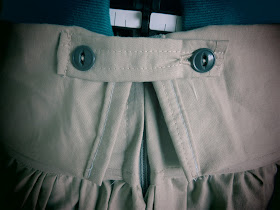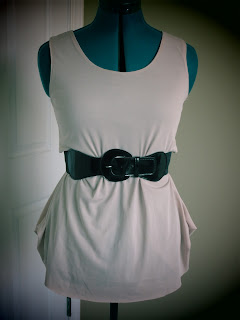Two things happened in 1989 as far as I was concerned:
(1) I was nine years old, and
(2) The Little Mermaid happened.
Ever since then, I have wanted to be a red-head. Now that I'm getting older (um. . .a bit past nine), graying is the inescapable inevitability. I'm hoping with a vitamin-rich diet, and this little trick I'm about to share, I can prolong color-loss as long as possible. (If you don't want red hair, scroll down for other natural hair dye options.)
Why This Is a Good Idea:
1. HEALTHFUL - That hair dye is chock-full of terrible ingredients is no secret. Even though companies claim that no one has died of cancer from hair dye since 1980, you have to ask yourself why every other box of hair dye says things like, "Amonia-Free!" and "Safer Formula!" Exactly what was amonia doing? And why is it still in half the dyes? Also, if the formula is safer now, then what was I putting on my head a month ago???
These are important questions. Therefore, if you can make a permanent dye with natural, hair-strengthening ingredients, you best do it!
2. TIME-HONORED - Women (and men) have been dying their hair with henna for centuries.
3. COST-EFFECTIVE - Making dye with henna costs less than store-bought dye even from the get-go--let alone the health benefits from not covering your head with damaging chemicals. It costs far less than a professional dye job.
What you need:
1. Henna powder - You can easily buy this online on eBay. It is probably for sale at your local Asian/Indian market if you live in a city. If you want really red hair, I suggest going for a pure henna powder. Sometimes packagers add ingredients like coffee and amla to darken the dye to more of an auburn or brownish red. If that is what you're going for, though, do it!
2. Hot water - Boil it in a kettle, not the microwave.
3. Lemon juice - You can also use lime juice. You can also use both together! (Some people use apple cider vinegar. I have tried it and I hate it. It makes your hair smell like vomit. Also, I feel like lemon juice gives brighter and shinier highlights.) Don't skip this ingredient. Henna needs something acidic, like citrus or vinegar, because the acid is what helps the "dye release" of the powder.
4. Essential Oil - Some would say this is optional, but henna has a very earthy green tea-ish smell. It's not bad, but if you don't want to smell like a plant, I suggest using an essential oil. I like to use peppermint, because I would rather my hair smell like a mojito than the aforementioned vomit!
5. Other non-ingredients: A plastic cup that you don't care about, a chop stick, a head wrap, rubber gloves, bobby pins, a hair claw, and a brown pillow case.
You may think that this process is going to be too labor-intensive, but actually, the actual amount of time it takes is the same amount of time you'd use to apply regular color. You are going to do this in two stages, however. You need to do this first part in the morning (takes about five minutes) and then dye your hair that same evening. Then, you are going to sleep with the dye on your hair all night and wash it out the next morning. You can easily do this on a work-night, but I usually save it for Friday night so that I can leave it in extra long on Saturday morning.
The morning before the evening that you dye:
1. Pour a few tablespoons of henna into a plastic cup and drizzle some boiling water over it till you get a thick dough-y consistency.
As far as amounts go: My hair is down to my waist and I have been dying it this way for several years now. I use maybe five heaping tablespoons of powder. I'm not sure. I just pour it in the cup till it looks right. You really just need to do it a few times yourself to get the right amount for your hair length and thickness.
2. Drizzle some lemon and/or lime juice into the mixture till you get a thick paste. I like mine to be slightly runny because it spreads more evenly that way.
3. Wait all day or at least four to six hours.
That evening:
1. When you finish your day and before you go to bed, wash your hair (no conditioner), don your gloves, and apply the paste wherever you want color. I usually take my chopstick and part my hair, front to back, one part at a time from ear to ear. Every time I make a part, I stick the chopstick into the sauce, twirl it around the stick, and paint it into the part. Then, I take a nice little handful of paste and, leaning over my tub, work it into the middle length of my hair and then the ends. Then, I twist my hair up into a bun on the very top of my head and bobby pin my bangs back. Lastly, I use my gloved fingers to paint the remainder of the henna around the edges of my hair. . .But if you have your own hair coloring system, do that! Make sure to wipe away any excess on your skin, but don't worry too much about it because it will just crust up and flake off. I usually put moisturizer on my face before I start just to make sure that the henna doesn't stick to my skin.

2. This might be the hard part for some people: Sleep in your pasted hair. It's not really that bad, though, and the long amount of time really helps the color set in. My personal system is to put the dye on my hair around 7:00 and let it air dry a bit before going to bed. Then, I wrap my head in this pink head wrap that I got at the Dollar Tree a million years ago (for. . .a dollar). Then I cover my pillow in this brown pillowcase just in case any stray dye feels like creeping out. I've never had it happen, but it would be awful if it did!
If you don't feel comfortable sleeping in the dye, then I would recommend at least four hours. I would also recommend spending a lot of that time with a hair dryer because the drier the paste gets, the more it absorbs into your hair shaft. Also, the less time you leave the henna on your head, the pinker and more temporary your hair color will be instead of red and permanent.
3. The next morning, wash it out. NOTICE: the first few minutes of washing is going to be kind of traumatic because your hair will be crunchy and immovable. Also, your shower is going to seem like it's never going to be clean again for about a solid five minutes. Don't worry. After the warm water has loosened the hardened paste for a while, the henna washes down the drain surprisingly cleanly. I only have to brush off the walls of my shower with my hands a little bit during the rest of my shower and no one is the wiser that the seconds prior were so catastrophically dirty.
This is the color of my hair before dying. (Keep in mind, it was still henna-ed, but a few months ago, so the new growth is brownish.):
This is the color of my hair immediately after washing and styling. (These last three photos are non-doctored, and I used the same camera settings, lighting, and location):
This is after a few days:
I would really recommend washing your hair with a super mild shampoo to help retain the color, but I would advise that for any dye job.
If you don't want red hair:
1. Blond - I hear that lemon juice and chamomile helps hair that is ALREADY BLOND retain its sheen. As far as a non-chemical way to go blond from originally dark hair, I don't think it exists. Bleach for sure is NOT the way to go. Maybe lemon juice and the sun?
2. Brunette - Add about 1 part finely ground coffee or amla to 1 part henna. Notice: coffee and amla alone are not going to dye your hair! Henna is not just a red dye, it actually bonds to the hair shaft to strengthen it and allow for dying to happen. Coffee and amla don't bond to the hair like that, they just help tone that bond down from red to brown.
3. Black - Purchase indigo powder on eBay (yes, the stuff that makes jeans blue). Go through the entire above process. It's important to do the henna process first to prepare your hair. The next morning, mix some indigo with some water until it makes a paste (Wear gloves!). Apply it right away to your rinsed hair. Wait two to four hours and then rinse it out. Your hair will be jet-black. Notice: mixing the indigo with the henna together doesn't dye your hair black. You have to do it in two steps to get black hair. You can use this method even if your hair is blond!




















































